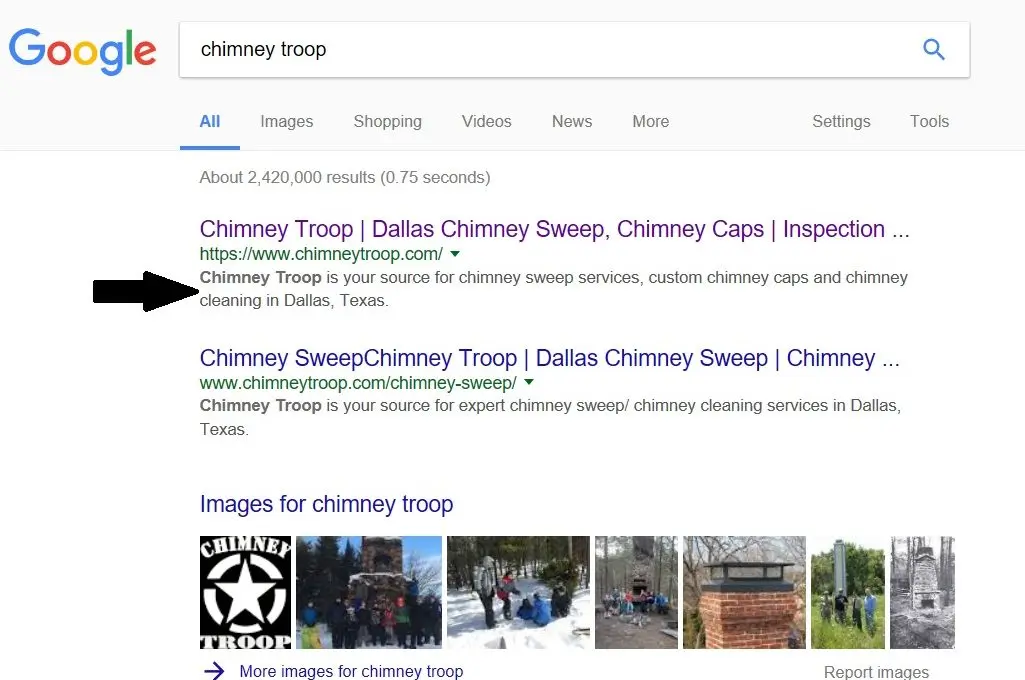Onsite SEO is pretty easy for most small businesses… especially if your website is built on an SEO-friendly platform like WordPress. Here are the main items to implement. Thanks to our friends at Chimney Troop for letting us use their website as an example:
Homepage Title Tag – The title tag is what displays at the top of the browser. The homepage title tag is the primary signal to Google as to what your website is all about. Many people just have their company name or something like “Home” as their homepage title tag and this is a huge mistake. This is the number one spot where you need to include the keywords that you want to rank for in Google. For Chimney Troop, they wanted to rank for “Dallas Chimney Sweep” and “Dallas Chimney Caps,” so it was very important for them to include those terms in the homepage title. Make sure to give a unique title tag that accurately explains what the page is about to all internal pages as well.

Meta Descriptions – Meta descriptions are an item in the source code for the page that the search engines use in their search results. If you do a Google search for “Chimney Troop” you can see their meta description here:

The meta description should tell a user what the page is about, with more information than the title tag (and often in complete sentences). It’s really important that each page on the site have its own unique and accurate meta description; far to many small businesses websites have the same meta description for every page (or just leave the meta description blank).
Content – Loading up with tons of keyword rich content is really key. If your homepage and internal pages are really image heavy and contain very little text, you’re really doing yourself a disservice from an SEO perspective. The best way to rank for a keyword like “Dallas chimney sweep” is to repeat that term over and over throughout your site. You don’t just want keyword stuffed garbage content though – you want content that will really engage your website viewers. Time on page and time on site are factors in Google’s algorithm. If lots of people find your site in the search results and spend five minutes clicking through your site and reading what you have to say, that will be excellent for your SEO campaign. Even if you think it’s not optimal for your design, it’s best for most businesses to have about 500 or more words on the homepage, and repeat your target terms in there as much as you can. Make sure that your text can be read by the search engines (i.e. it’s not hidden in images or Javascript or something like that). That’s another common mistake. Some search engines (like Google) have become more sophisticated and can read some text in images/ javascript but it’s really best just to include your text as plain text.
Really those are the three big ones for most small businesses doing local SEO. Everything else (effective use of header tags, alt tags on images, schema markup, etc.) is really insignificant in comparison. Focus on nailing those three… and then most of your time should be spent on offsite SEO/ link building.


